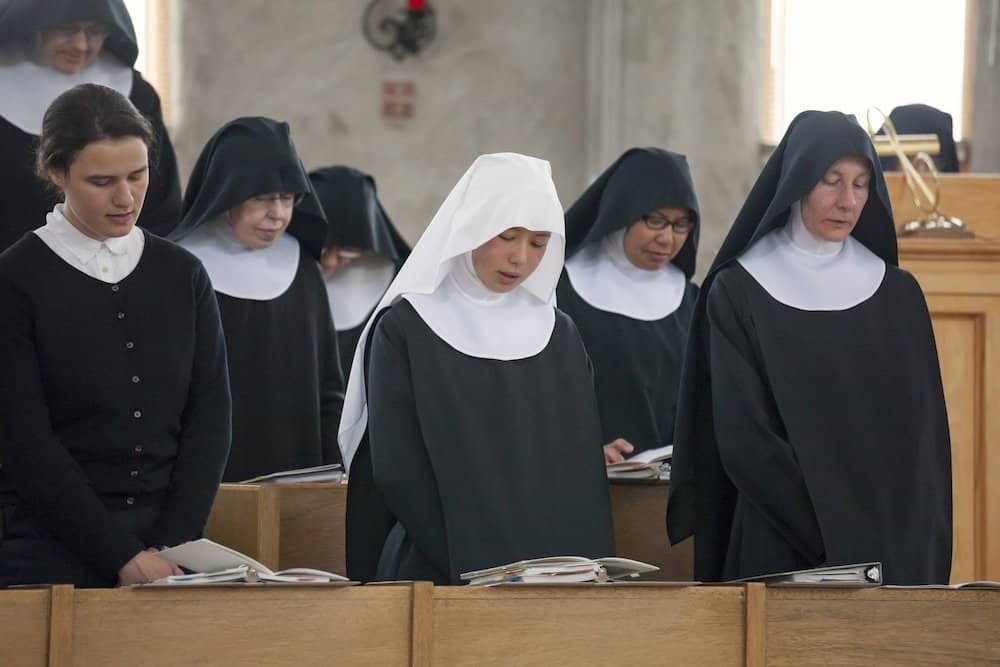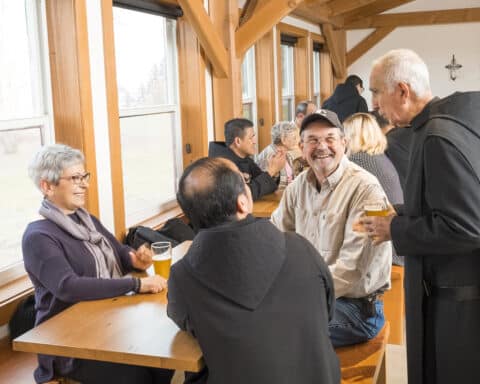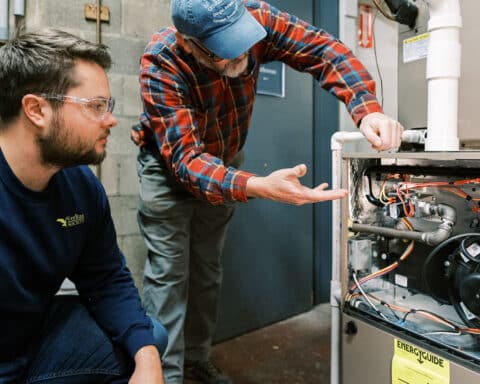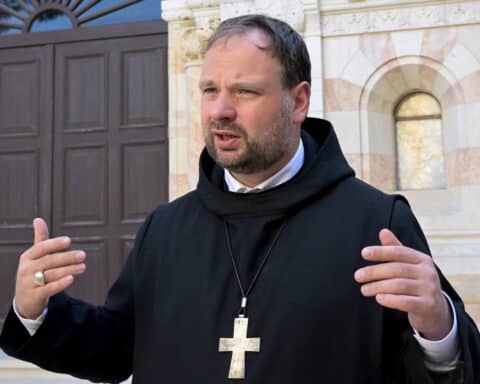Every spring, the big event for many families is a graduation. Commencement exercises are part of the culture, rites of passage, festive, formal occasions. Graduates wear traditional costumes, never worn on the street, for no other event, at a state university, public high school, Catholic, Protestant, or nonsectarian institution, to signal completion of an organized process of schooling.
Catholics should be proud of their Church. Although variations have crept into use, and thrift, style and convenience have affected the outfits, graduates dress as if they were monks or nuns of the Catholic Order of St. Benedict, or Benedictines.
Clothed in ‘cocoons’
First, what are the costumes? Churches once were not heated. The Benedictines came into being 15 centuries ago, living together in monasteries or convents, depending on their gender, attached to churches or chapels where the monks or nuns worshipped. In winter, these churches were quite cold.
To endure the cold in unheated churches, each monk or nun wore a long, full, ankle-length, woolen garment called the “cuculla,” from which “cocoon” takes its name. It was pleated to create layers. Sleeves went to the fingertips, warming even the wearers’ hands. All were black, the traditional color of Benedictine habits.
Monks or nuns wore the “cuculla” on other occasions, not only in church in cold weather, such as when they taught.
An order of educators
To return to a graduation as the climax of formal schooling, the Benedictines invented education as it is known today. Once, only students of the Benedictines were regarded as truly enlightened, educated and knowledgeable. Monks and nuns were the scholars.
Before the Benedictines, schooling, as it now is known, was rare. It was one-to-one. A parent, if educated himself or herself, taught a child. If a family had the means, a tutor was hired. Most people had no education at all.
The Benedictine monasteries and convents brought several students together, in one room, with one teacher, and followed an organized process, teaching the basics — how to count and how to communicate — as well as agriculture, ethics, Catholic theology, the arts and music, because students participated in the Masses and other ceremonies in the church.
Monasteries and convents provided the first organized health care. People brought their sick to the monks or nuns to be treated expertly and lovingly. The poor came to the monasteries and convents for help. The Benedictines provided the first systematic social services.
Travelers stopped at monasteries for security, shelter, food and directions.
Benedictines saw their teaching, or nursing, or hospitality, as extensions of their Christian discipleship, making Christ known in their worlds, always seeing Christ in every person. They literally brought the Christian Gospel, law and order, science and beauty to Europe, far beyond their origins in central Italy.
Tradition continues
The Benedictines still are a great presence in the Church and in education. In this country, their monks operate, by their count, 20 colleges, seminaries and universities, in addition to high schools from Louisiana to New Hampshire, Oregon to Florida.
Forty-five American monasteries for men follow the Benedictine tradition today. Over 20 communities of nuns pray for the world, and many conduct schools.
Religious orders have been, and are, glories of the Catholic Church. The history of many sparkles with heroism, sanctity and accomplishment, but none more greatly contributed, not only to Christianity, but to civilization, than the Benedictines.
So, note graduates, dressed as if they were monks or nuns of the Order of St. Benedict, and be proud. Give thanks to God for the men and women who loved, and love, the Lord so much that they came, and come, together in the Benedictine model, to make real the mercy, love, wisdom and goodness of Jesus.
This thanksgiving challenges everyone. While the Benedictines have their own beautiful history in the world, anyone can serve the Lord, magnificently, at any time, in his or her own way.





